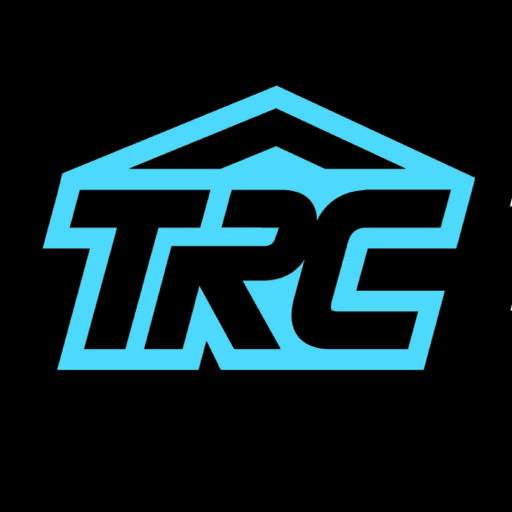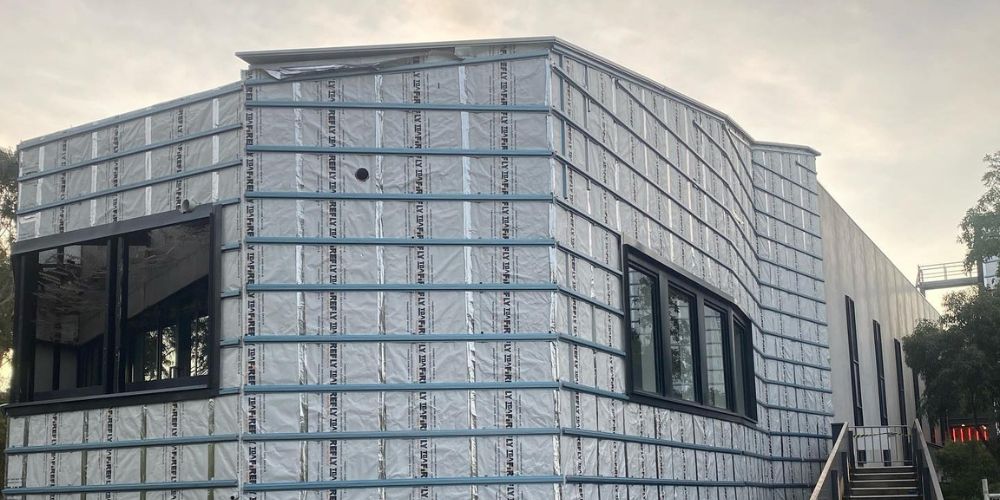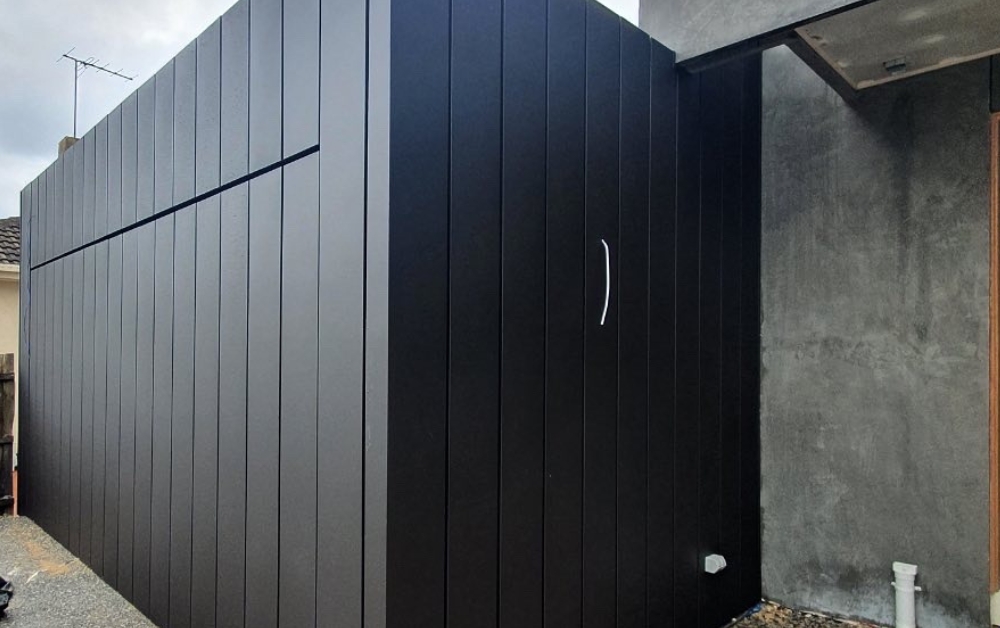Curved Wall Cladding 101: Choosing the Right Material for the Job
Curved walls look unique and can add a touch of elegance to any building. But when it comes to choosing the best cladding for them, it can be tricky. As a roofing and cladding expert here in Melbourne, I am often asked this question.
When it comes to curved walls, there are better choices than traditional cladding materials like bricks or timber. Curved surfaces require flexible materials that can be easily shaped to fit the wall’s contours without compromising durability or aesthetics.
That’s where specialized cladding materials come into play. These materials are designed specifically to be flexible enough to mould to the wall’s curvature while still providing the necessary protection against the elements.
But with so many options available, how do you know which is best for your curved walls?

Lance Mathews
In This Article

What are Curved Walls?
Curved walls are architectural characteristics distinguished by their softly or sharply curved shape, unlike the straight lines commonly found in conventional walls. These walls can curve inward or outward, giving the structure’s architecture more visual intrigue and dynamic appeal. They exist in many buildings, such as residences, businesses, and public areas.
Curved walls are built from many materials, like concrete, brick, glass, or metal. They are frequently employed to produce distinctive and eye-catching architectural designs that give the entire construction a feeling of fluidity and movement. Curved walls can also have practical uses, such as improving flow and circulation in space, boosting acoustics, or offering structural support.
Why Do We Need Cladding for Curved Walls?
Now, you might wonder, “Why do we even need cladding for curved walls?” Cladding, essentially a protective layer covering the exterior of a building, serves a crucial role for any wall, especially for curved ones.
Here’s why:
Protection from the Elements
The purpose of cladding is to protect the underlying structure from the elements, such as wind, rain, and sunshine. This ensures the building will last a long time by preventing damage and degeneration.
Enhanced Insulation
By enhancing the wall’s thermal insulation qualities, cladding can help control interior temperature and lower energy use for heating and cooling. This is especially crucial in regions with high temperatures.
Aesthetic Appeal
Cladding gives curving walls a polished, unified appearance, which enhances their visual attractiveness. Because it is available in various hues, textures, and materials, it may be tailored to blend in with the building’s overall architectural style.
Support Structure
Cladding can improve the curving wall’s structural stability and offer insulation and protection. It can lessen stress on the underlying structure, help distribute loads uniformly, and improve stability.
Maintenance and Durability
Cladding materials’ longevity and low maintenance needs are common factors in their selection. They are made to withstand weather exposure and wear and tear, which lowers the frequency of repairs or replacements.
Different Types of Cladding
Cladding isn’t just about aesthetics but also protection and durability. So, whether you’re looking to add a touch of charm or enhance your building’s resilience, understanding the various types of cladding is key.
There’s a whole world of options, which we personally install on our clients properties, each with perks and quirks. Here are a few:
Vinyl Cladding
Vinyl could be your best option if you’re looking for something reasonably priced and low-maintenance. It is long-lasting, simple to maintain, and available in various hues and designs. It’s also lightweight, which makes installation a breeze.
Wood Cladding
Going past wood cladding for that organic, rustic appearance can be challenging. Wood, whether pine, cedar or another type, gives your walls character and warmth. Remember that more maintenance will be required to keep it looking its best.
Metal Cladding
Are you looking for something sleek and modern? Metal cladding could be the answer. It’s durable, weather-resistant, and offers a clean, contemporary aesthetic. Plus, it’s highly customizable so that you can make a statement with your design.
Brick Cladding
If you love the timeless charm of brick but want something lighter and easier to install, brick cladding is worth considering. It gives you that classic brick look without the hefty weight or cost.
Fiber Cement Cladding
A versatile option, fibre cement cladding combines cement’s durability with fibre’s flexibility. It’s resistant to fire, rot, and pests, making it a great choice for residential and commercial projects.

Which Cladding Is the Best for Curved Walls?
Choosing the best cladding for curved walls depends on your priorities and the specific needs of your project. But I’d lean towards metal cladding if I had to pick a top contender.
Here’s why: Metal cladding offers a winning combination of durability, flexibility, and aesthetic appeal that’s hard to beat. Its sleek, modern look can complement the curves of your walls beautifully, adding a touch of sophistication to any building.
But what sets metal cladding apart is its ability to conform to curved walls’ unique shapes and contours. Whether with gentle arcs or dramatic curves, metal cladding can be custom-formed to fit seamlessly, ensuring a smooth, professional finish.
Plus, metal cladding is known for its longevity and low maintenance requirements, making it a practical choice for curved walls that must withstand the elements for years.
Of course, there are other options, like vinyl, wood, or fibre cement cladding, each with its strengths and weaknesses. But if you’re looking for a versatile, durable solution that enhances the beauty of your curved walls, metal cladding gets my vote every time.
Frequently Asked Questions
The lifespan of cladding for curved walls depends on various factors, including the material used, maintenance practices, and environmental conditions. Generally, high-quality cladding materials installed properly can last for several decades before requiring replacement or significant repairs.
While some cladding materials may be DIY-friendly, installing cladding on curved walls can be challenging and require specialized tools and techniques. For best results and to ensure proper fit and durability, hiring experienced professionals familiar with curved surfaces is recommended.
In most cases, changing the colour or finish of cladding for curved walls is possible after installation. However, the feasibility and ease of doing so may vary depending on the material used and the extent of the desired changes. Consulting with a professional can help determine the best approach for modifying cladding appearance post-installation.
Like any exterior building material, cladding on curved walls may require periodic maintenance to ensure longevity and appearance. This may include cleaning to remove dirt and debris, inspecting for damage or deterioration, and performing necessary repairs or touch-ups. The specific maintenance needs will vary depending on the cladding material and environmental conditions.
Conclusion
When it comes to cladding for curved walls, there’s no one-size-fits-all solution. It ultimately boils down to your specific needs, budget, and aesthetic preferences. Whether you opt for the durability of metal, the warmth of wood, or the versatility of vinyl, the key is to choose a cladding material that looks great and stands the test of time.
Remember, investing in quality cladding for your curved walls is not just about enhancing the appearance of your building; it’s also about protecting it from the elements and ensuring its longevity. So, take your time, weigh your options, and don’t hesitate to seek professional advice if needed.
With the right cladding choice, you can turn those curvy walls into a standout feature that adds beauty, character, and value to your home or building for years to come.

